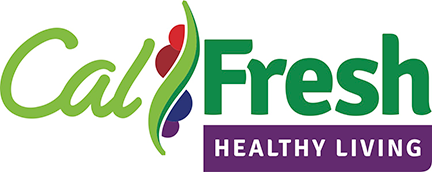
SR2S Newsletter Fall 2024
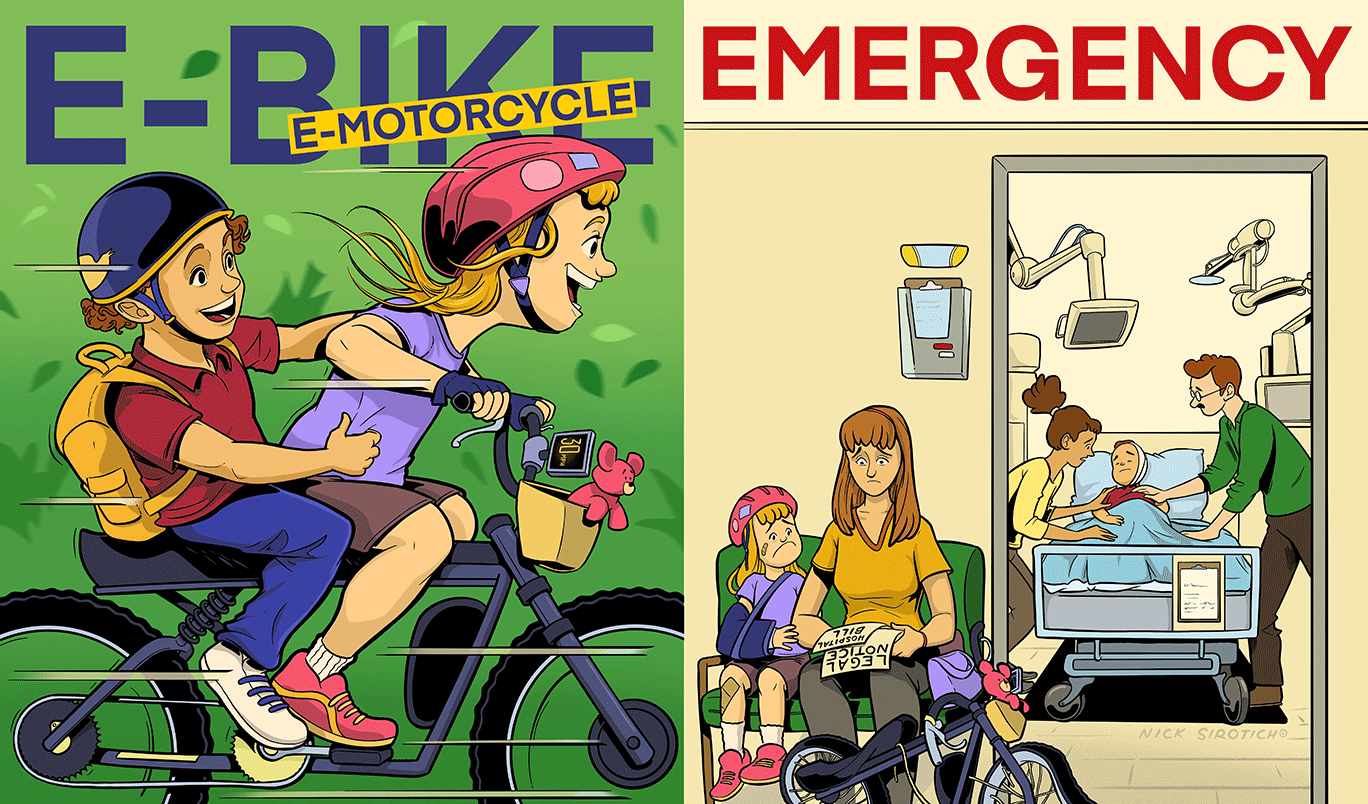
Five out of nine middle schools (55%) in Marin have implemented an e-bike permitting this fall to remove illegal devices from campuses in response to health professionals, law enforcement, and community concerns about student safety. They are Hall, Miller Creek, Del Mar, White Hill, and Mill Valley Middle Schools. Most of the other middle schools currently do not have enough e-devices on campus to warrant a formalized permitting policy.
According to the Marin Health and Human Services dashboard that has tracked all bicycle-related crashes for nearly a year, 10 to 15 year olds are 5 times more likely to be involved in a severe e-wheel crash requiring EMT trips to the hospital than any other age group. The number of total injuries is unknown since parents typically bring their own children to the hospital, but ER doctors have warned that the severity of harm has significantly increased over conventional cycling and is comparable to motorcycle crashes.
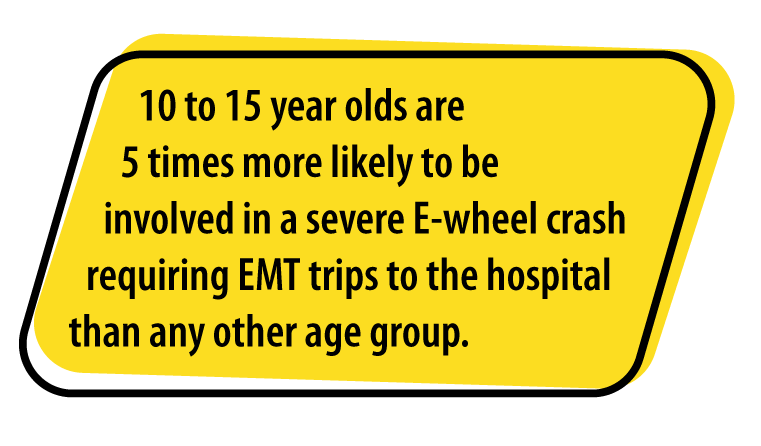
Administrators from Middle Schools where parking permits have been instituted have had a mostly positive response from parents.
Of the nine middle school principal responses obtained by Safe Routes to Schools, nearly 100% reported a need for more parent education and recommended a countywide marketing campaign to increase awareness for purchasing legal, age and skill-appropriate e-bikes for students. Many parents are still confused over what is legal or not for their student to ride, mainly with the popular Class 2 brands that are illegal in California (CVC 312.5 (a)). These e-motorcycles exceed the mandated 750 watts and maximum 20 MPH speed limitation to qualify as low-speed e-bikes in our state.
Of the principals contacted, 80% suggest that local law enforcement should institute a diversion program similar to the one conducted in Mill Valley (if cited, students and their parents must attend an e-bike class to waive the citation from the student’s record). At least three of the five administrators with parking permits reported that some students are exploiting the school policy by parking illegal devices off campus.
“Principals and law enforcement have been tremendous allies in our combined effort to keep students safe on legal e-bikes that fit children’s age and skill levels,” said Safe Routes Program Director, Gwen Froh. “Teaching children to be law abiding citizens – for their own safety and the safety of others – has been our goal for 25 years, and we need parent, student and community support to achieve this endeavor.”
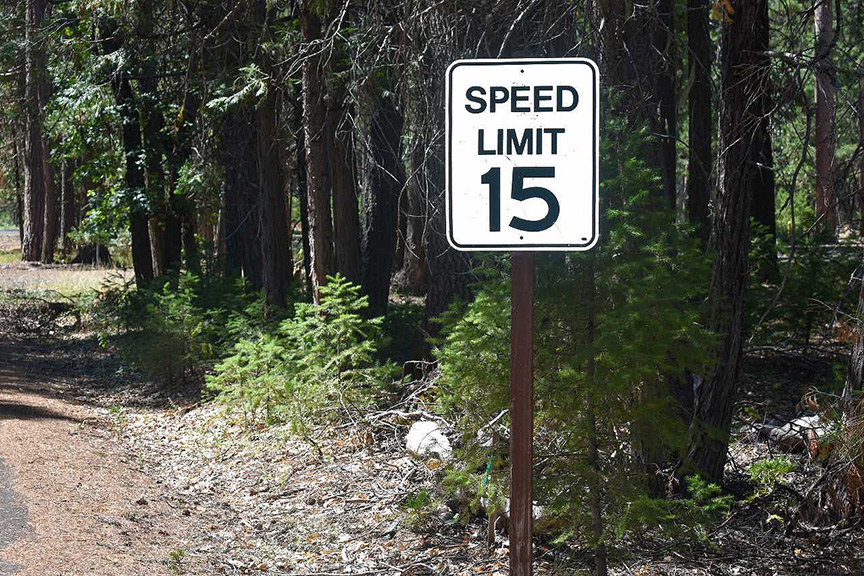
The Ross Town Council has taken swift action to improve safety around local schools by lowering speed limits. Soon, both Branson and Ross Schools will see 15 mph speed limit signs within 500 feet of their campuses, ensuring safer conditions for students. It is important to note how fast the decision was made and implemented.
The need for this change came up during a recent Safe Routes to Schools Task Force meeting for the Ross School District, where the issue of speeding cars was raised. Safe Routes to Schools informed the town about a state law, AB 321, passed in 2008, which allows for the reduction of speed limits in school zones from 25 mph to 15 mph. At the very next council meeting, the town approved the change at the suggestion of the Department of Public Works.
Safe Routes to Schools Task Force meetings are held three times a year—in fall, winter, and spring—and bring together school officials, local government representatives, volunteers, neighbors, and other stakeholders to address safety concerns around schools. The top issues receive walk audits from the Safe Routes engineering team, followed by consultations with public works officials to finalize recommendations. While some improvements require funding, as seen with the Ross speeding issue, others simply need decisive action from local authorities. Kudos to Ross for prioritizing student safety.
Find out here when your town’s next Task Force meeting is happening and read notes from previous meetings.
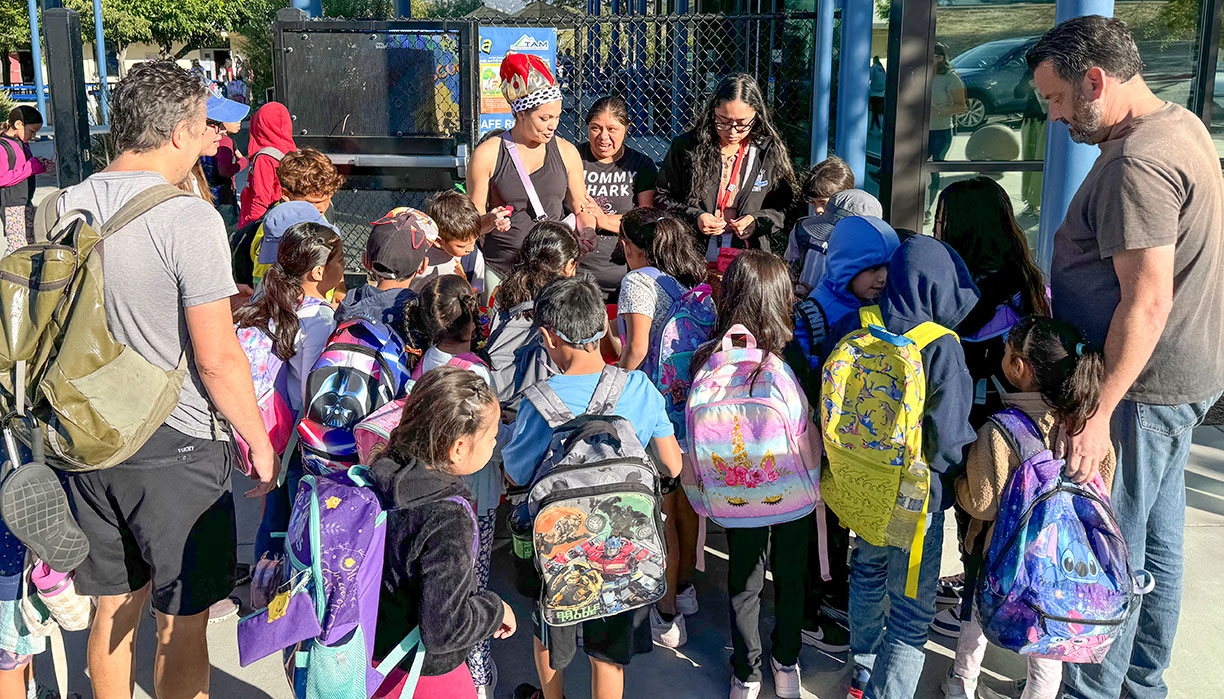
The Safe Routes encouragement program has a new twist this fall. It features a reduced number of events, going from the usual four down to three—one each in September, October, and November, with an optional Walk and Roll Day in December.
“The goal is to relieve parent volunteers from organizing an event in December, when the weather is cold and wet and safety is a concern for many of our schools. This way, they can instead focus on supporting carpools or park-and-walk locations at their schools,” explained Safe Routes to Schools Program Director Gwen Froh.
Introduced during the volunteer luncheon in late August, the initiative was well received by attendees, with many already brainstorming new programs for winter.
The first event of the school year took place on September 11, with a large number of schools and students participating in walking and rolling activities. At the welcome table, many parent volunteers and students added a great photo op by wearing silly hats, which were later raffled off among the event participants.
For International Walk and Roll to School Day (IWalk) on October 2, several schools, including Pleasant Valley, Venetia Valley, Wade Thomas, Hidden Valley and Manor had significant preparations. These schools featured fire truck escorts, while Pleasant Valley students made smoothies with a blender bike, powered by their own pedaling.
November’s Ruby Bridges Walk to School Day is already generating excitement. The majority of the schools have order swag donated from AAA and some of them applied for a grant of up to $1,000 that should be used for education about inclusivity and anti bullying. Schools like MLK, Loma Verde, Venetia Valley, and Pleasant Valley have announced their intention to elevate this growing tradition that celebrates equality and social justice.

The Transportation Authority of Marin (TAM) is accepting proposals through December 11 for the latest round of Safe Pathways funding. Now in its fifth cycle, this funding opportunity offers up to $100,000 for small projects and up to $450,000 for larger initiatives, which may include new sidewalks, bike lanes, and other safety enhancements.
The Safe Pathways to Schools Program aims to make biking and walking to school safer for students across Marin County. Since its inception in 2007, the program has supported 80 projects, demonstrating its commitment to improving local infrastructure and student safety.
During the last round of applications in 2019, TAM received 29 applications from 13 agencies. Thirteen out 15 large projects were approved for funding. Just a few examples are the construction of bike lanes on Francisco Blvd. West (shown in picture), pedestrian improvements in Coloma Street, Sausalito, and a pedestrian hybrid beacon at Sir Francis Drake Blvd. and Saunders in San Anselmo. In the same package, a pedestrian-safety improvement project benefitting West Marin School was also included.
The selection process for funding involves collaboration between Safe Routes task forces, the Safe Routes engineering team, and local jurisdictions to identify and prioritize issues affecting student commutes.
Projects are selected based on their performance in improving safety across the county, ensuring that funds are allocated to initiatives that have the most significant impact on making student commutes safer and more accessible.
The TAM Board will approve the recommended projects for funding in February or March, 2025.

Students across the county are invited to participate in the “Buddy Up” contest, promoting walking, biking, carpooling, or taking the bus to school together. From now until November 15th, groups of two or more students can sign up to travel to or from school, with a chance to win $50 awards for five winning groups.
Research shows that healthy habits are more likely to stick when friends encourage each other. Walking or biking in groups not only enhances safety, as drivers are more likely to notice larger groups, but also creates opportunities for friendships and lasting memories. The contest is sponsored by Safe Routes to Schools.
Parents and students are encouraged to share their success stories. Here’s what one parent from Rancho Elementary shared: “We all ride together in the mornings, ringing bells like a bus at each friend’s house along the way. We have several parents, a Rancho flag, and even music! It’s so much fun having a group big enough to take over an entire lane. Nearly every day, people wave to us and cheer. Fun times!”
- Ross – Monday, Jan 13 at 10 AM
- Mill Valley – Wednesday, Jan. 15 at 9:30 AM
- Ross Valley – Friday, Jan. 17 at 10:00 AM
- San Rafael – Wednesday, Jan 22 at 5:00 PM
- Kentfield – Thursday, Jan 23 at 9:30 AM
- Miller Creek – Monday, Jan 27 at 4:00 or 5 PM
- Novato – Wednesday, Jan 29 at 5:00 PM
- Reed – Thursday, Jan. 30 at 10:00 AM
- Larkspur – Corte Madera – Thursday, Jan. 30 at 4:00 PM
- West Marin – Tuesday, Feb 4 at 5:00 PM
- Sausalito/Marin City – Thursday, Feb. 6 at 5:00 PM
Contact Wendi Kallins if you are interested in joining a task force or if you would like a copy of archived task force meeting notes.
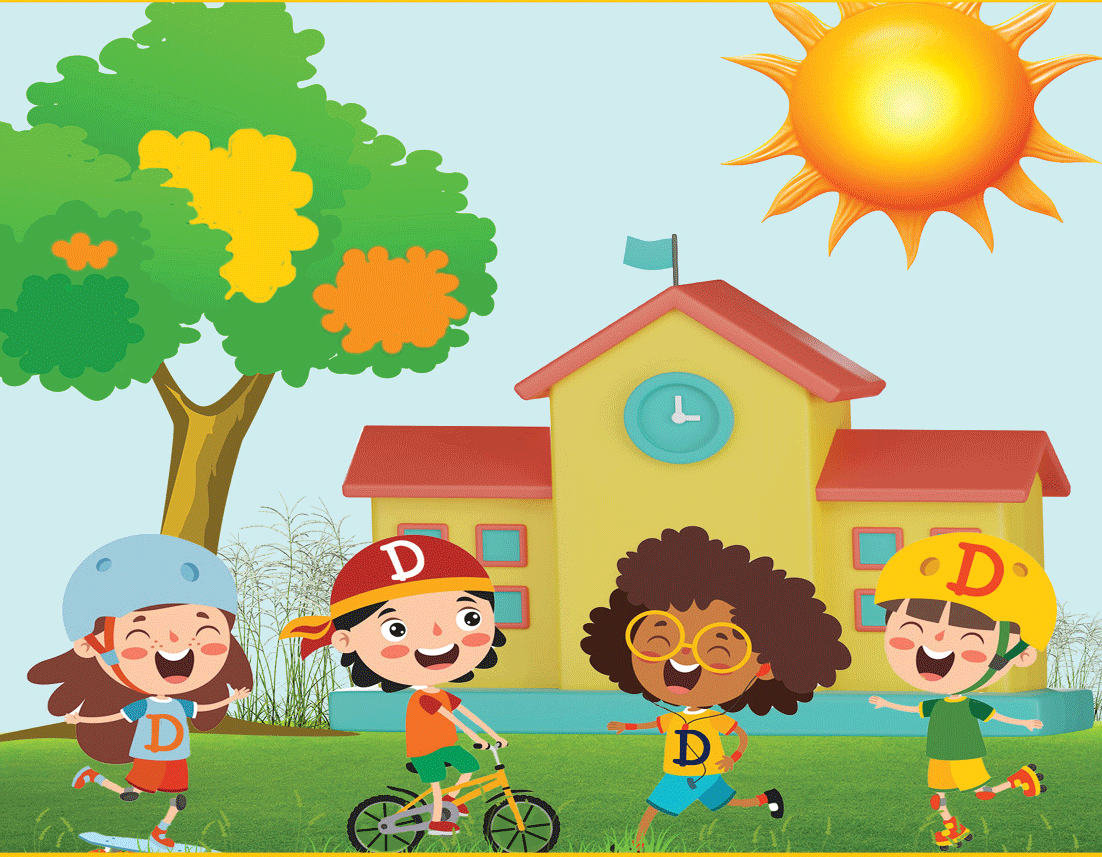
Walking or biking to school is more than just a way to fit in some exercise—it also gives kids a healthy boost from sunlight exposure. According to Dr. Stephen I. Katz, former director at the NIH, “You need very little exposure—something like 10 to 15 minutes a day to the backs of your hands, arms, and face—to get enough vitamin D,” which is essential for strong bones and a resilient immune system.
Morning sunlight doesn’t just stop at bone health—it also works wonders for mood and sleep. Sunlight helps boost serotonin, the “feel-good” chemical, making kids feel more positive and focused during the day. It also helps regulate melatonin, the hormone that makes falling asleep easier at night. According to the National Institutes of Health, morning sun exposure helps set kids up for better sleep, which is crucial for their growth and overall well-being.
Dr. Barnett S. Kramer, a cancer prevention expert, adds, “The time to really start sun protective behavior is not when you reach adulthood, but years before.” That means parents should encourage safe sun exposure—getting enough for the benefits but being cautious to avoid long-term skin risks.
So, when the sun is shining, grabbing those bikes or heading out on foot to school isn’t just good for exercise—it’s also a great way to give your kids a sunny start to a healthier day.
By Nick Pappas*
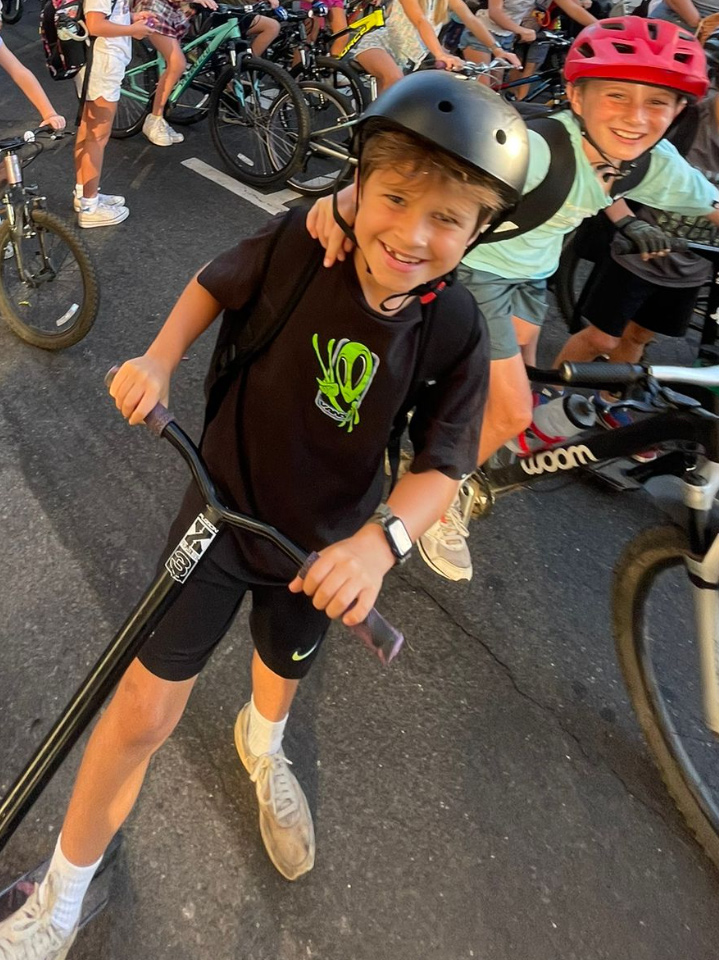
San Anselmo neighbors Jason Cardillo and Amanda Schwartz have been “bikepooling” their kids to Wade Thomas Elementary for years. Over time, they’ve seen a consistent rise in the number of bike families parents on cargo bikes, families riding together, and, as they get older, kids traveling solo and with friends.
“We’re now at the point where we have more parents dropping off kids from bikes than we do from cars at the back of school,” Jason said.
Jason credits San Anselmo’s dense traffic and the town’s narrow streets for making driving less desirable. “It’s faster to ride a bike,” he said. Electric cargo bikes also make moving kids and backpacks easier and more fun.
“It just snowballs. The more mainstream it is, the more people see others doing it, the more participation we get,” he said.
With the surge in popularity, Wade Thomas parents are organizing to coordinate and talk about ways to make the ride safer and more fun for everyone. Jason and Amanda are part of a neighborhood effort to form a bike train a daily meetup for families and kids to ride together safely along Wade Thomas’s recommended safe routes to school.
While it’s still in the early stages, parents are optimistic that riding together will be an increasingly popular option for parents and kids, will be safer and more fun, and can reduce traffic risk on the school route.
“At the end of the day, it’s just the best way to get to school. They may not always jump out of bed ready to bike, but the moment feet are on pedals everyone’s having a great time,” said Nick Pappas, one of the parents helping organize. “Bike time with friends, fresh air, and light exercise -it’s a mile of smiles.”
Even though the designated school route is on backstreets, it’s still a popular route for car traffic looking for a shortcut around downtown, as well as parents and teens driving to neighboring schools. The route’s narrow streets and blind curves can present conflict risk with oncoming drivers.
“Our kids have been doing a great job learning how to be safe, courteous riders but there’s not much we can do about drivers who think the school route is the place to make up time when they’re running late,” Nick said. “Riding safely, together with parents and friends is a great way to reduce conflict risk.”
Jason, who has been the Wade Thomas parent volunteer for years, will be leaving the role behind with optimism when his son graduates this year. “It’s been amazing to see the growing enthusiasm on our school route. We’re reducing traffic, teaching kids confidence and independence, and helping the environment with great friends and memories along the way.”
*Nick Pappas is the father of a Wade Thomas student and leader of the bike train.
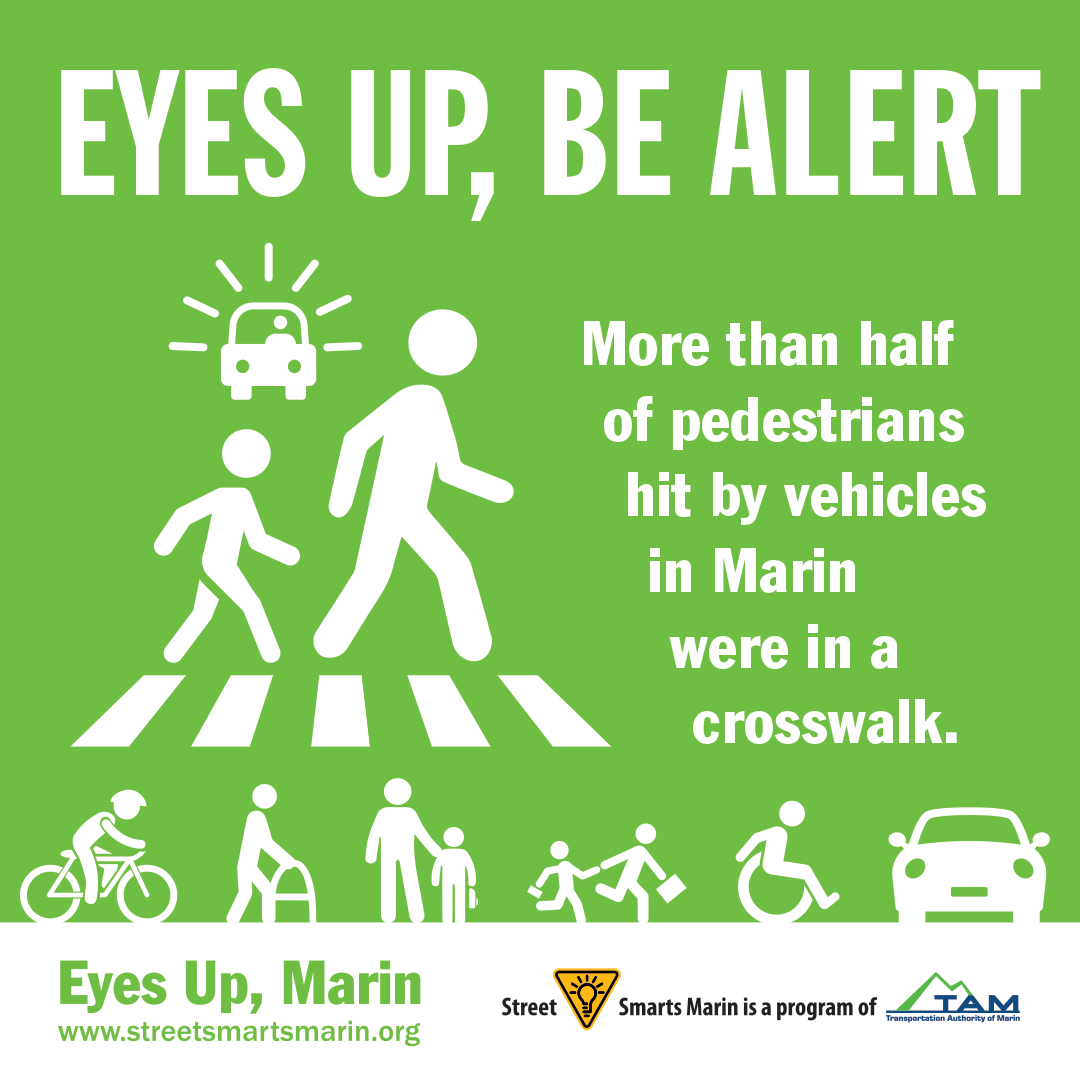
From September 23 through the end of November 15, you will again see bright and colorful banners and lawn signs popping up all over Marin asking people to keep their “Eyes Up” and be alert. These signs will be asking drivers to slow down, watch when turning and look for pedestrians in the crosswalk; bicyclists to yield to pedestrians and to follow the rules of the road; and those walking to pay attention when crossing the street.
This is the most important lesson to keep your kids and yourself safe. People have so many distractions that turn our attention away from the important task of traveling safely, but if everyone kept themselves alert, many tragedies could be avoided.
The catch phrase to remind ourselves to pay attention is Eyes Up. It’s a simple way to remember that you’re driving right now, or walking, or biking.
These messages will also show up in your social media feeds, and you can find them at www.streetsmartsmarin.org. Please share with your friends, family and co-workers.
To get a free lawn sign for your yard, contact your local municipality. There is a tab on the www.streetsmartsmarin.org website with this information.
The Eyes Up, Marin campaign is part of the Street Smarts Program and Safe Routes to Schools, locally funded programs of the Transportation Authority of Marin.



Go for the Gold

This fall, Safe Routes returns with golden opportunities to increase health and safety.
Get your Olympic mojo on! Plan to walk, bike, park and walk, carpool, and ride the bus to school.
Every bit helps our planet while reducing traffic for safer streets.
Plus, walking and rolling provides the golden opportunity to collect Vitamin D from the sun.
Check out our new video: HERE
Buddy Up Contest
The Buddy Up annual contest promotes groups of students to walk, bike, carpool, or take the bus together. Healthy habits are more likely to stick when students and their families support each other. There’s safety in numbers as groups are more easily seen by drivers. Best of all, friendships and fun memories are formed!
Nominate your 2024 Buddy Up group HERE
The 2023 Winners are HERE
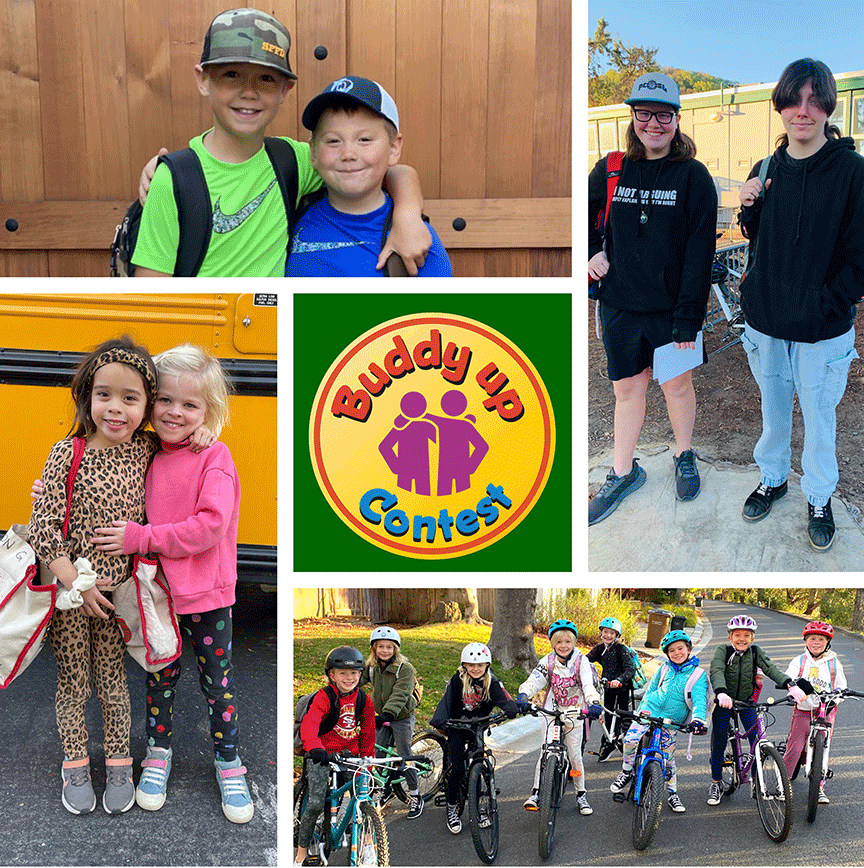
Fall Elementary School Events – Walk and Roll Wednesdays

Active travel in the morning wakes up the brain for learning and the golden rays provide Vitamin D for health. Walk and Roll (park and walk) at least once per week to reap the benefits and to set a healthy habit.
Parent Volunteer Meeting
August 29, 10:30-12:30, at the Transportation Authority of Marin.
RSVP: [email protected] or [email protected]

Be E-Bike Safe
Safety is our first priority for students.Know the laws and recommendations
before putting kids on e-wheels: HERE
Guidelines to stay safe while riding
e-bikes and what to know when buying
one for your child.
Download this important information from Transportation Authority of Marin.
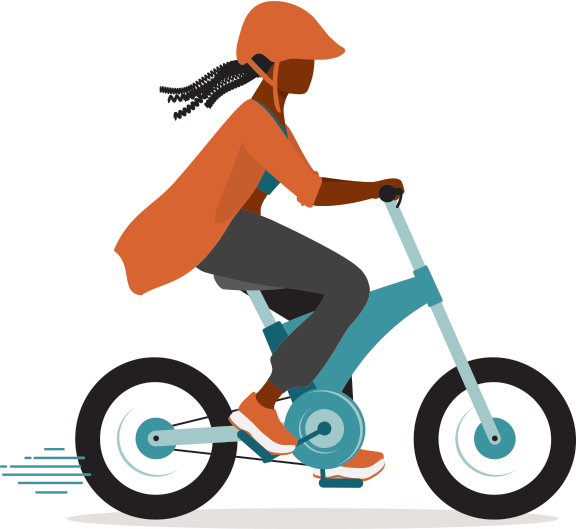
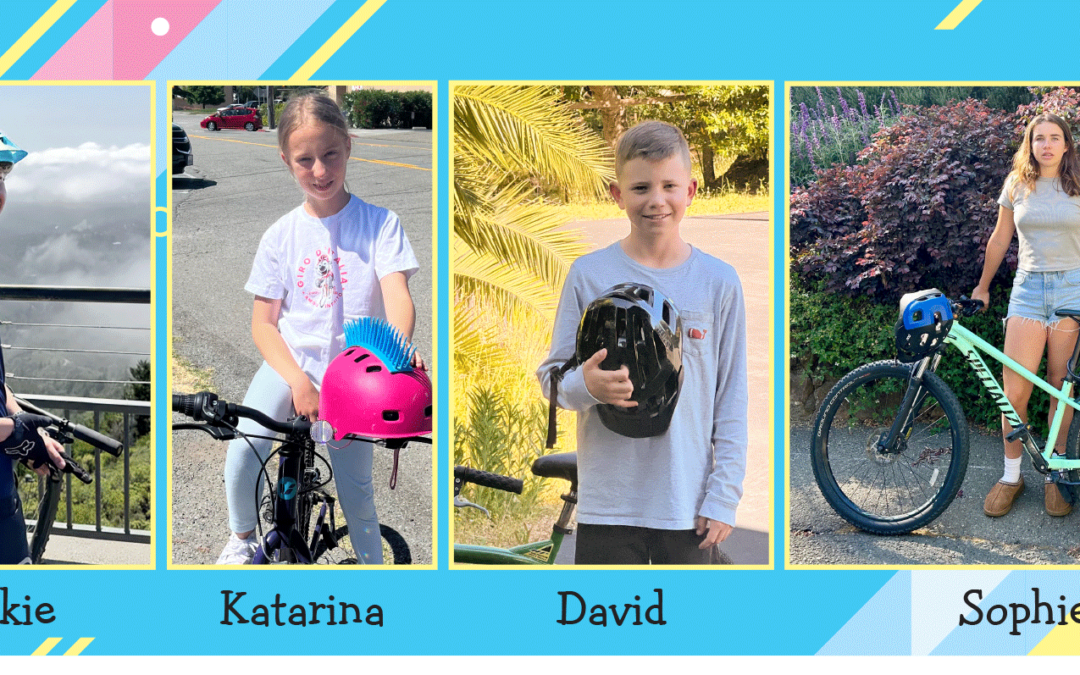
Winners! Bike Hero Award 2024
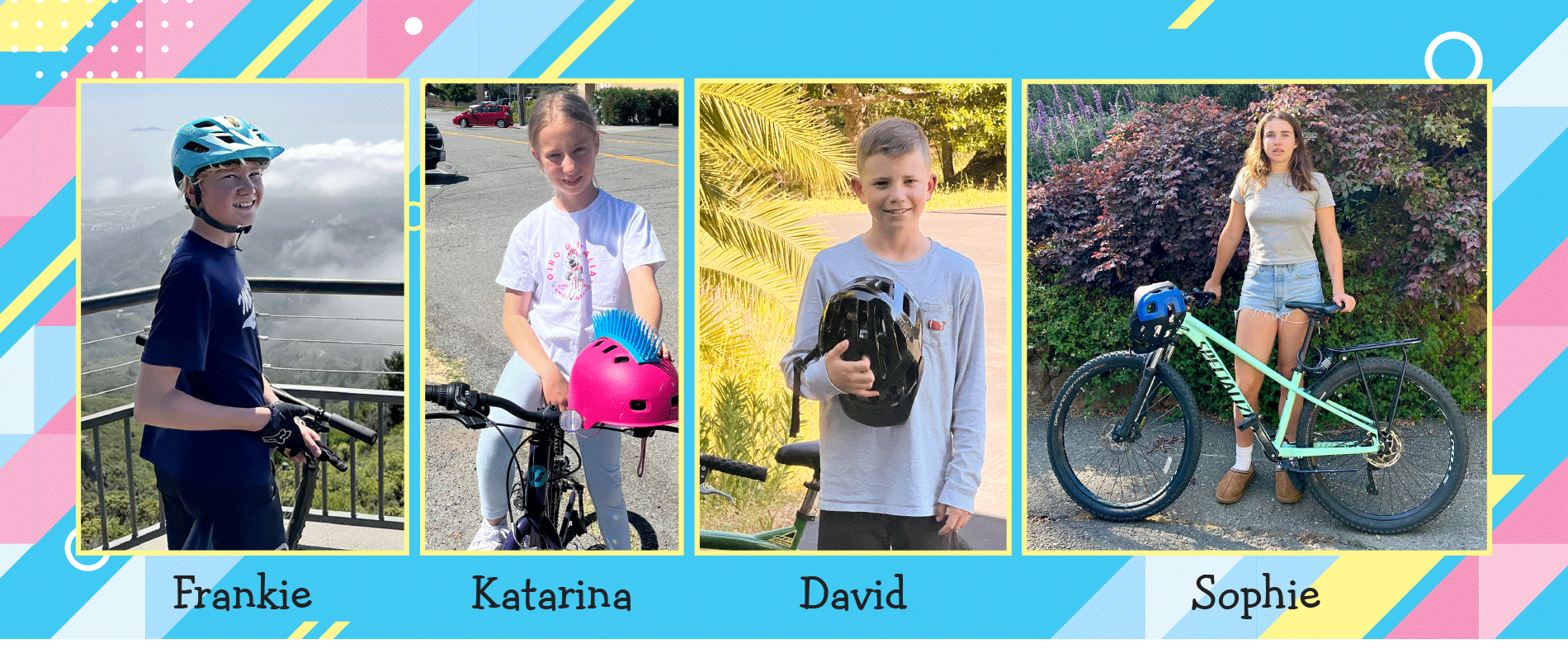
Marin Safe Routes to Schools is proud to announce the winners of the 2024 BIKE HERO awards. There were 164 nominations and 26 schools represented in our BIKE HERO 2024 contest! Teachers, parents, neighbors, and fellow students sent in testimonials of students leading their peers, climbing big hills, battling the weather – all while obeying the rules of the road on bike. Two students were selected from elementary and two students from middle for the 2024 award. Congratulations to them and to all the students who were nominated!
Here is what friends and family had to say about our
BIKE HEROES for 2024:

Katarina Moller, Venetia Valley, 4th grade:
Katarina deserves to be a Bike Hero because of her incredible determination getting to school. She rides to school every day in all weather. Through her daily commute, biking to school helps build a healthy lifestyle for herself and influences others amongst her. She cares about the environment and hopes everyone will learn to bike everywhere they want to go! Katarina is a great role model for others who push themselves to be at their best!

David Eddings, Pleasant Valley, 4th grade:
David is always ready to ride. He gets up early and completes morning ceremonies: breakfast, shower, brushing and flossing, a little gel in his hair-do and then its helmets on and ready to pick-up his bike buddies en route to school. This year started with just a single friend at his side and now they have a whole group of as many as eight riders all rolling down Vineyard making the trip to school pedal-powered and starting their day the right way!

Frankie Foster, Mill Valley Middle, 7th grade:
Frankie rides his bike 1.6 miles to school every day. He has a 10 pound backpack. To return home, he must ride up a very steep hill that is hard to walk up. He never complains and looks forward to spending time on his bike. His parents don’t have to spend their time and money taking him to school. Frankie Foster is as comfortable on his mountain bike as he is on his own two feet!

Sophie Poindexter, Kent Middle, 8th grade:
Since 5th grade, Sophie has biked to school every day without a single complaint. Despite having to conquer the challenging Wolfe Grade hill to Wolfe Canyon daily, she has never requested an electric bike. Her unwavering commitment to biking over the past four years is what makes her our hero.
Be E-Bike Safe
Guidelines to stay safe while riding e-bikes and what to know when buying one for your child.
Download this important information from Transportation Authority of Marin.
Wear a Helmet and Wear it Properly
You’re more likely to have a crash resulting in a brain injury when you ride a faster e-bike compared to a regular bike. Make sure your helmet fits and that it’s properly adjusted and attached before you ride. Helmets designed for increased speeds are ideal.
Practice Passenger Safety
E-bikes are heavier and harder to control with or without a passenger. Carrying a passenger is legal only if your e-bike has a seat for another person; regardless, the extra weight can make it difficult to maneuver, slow down, and stop. Passengers must also wear a helmet if they are under 18.
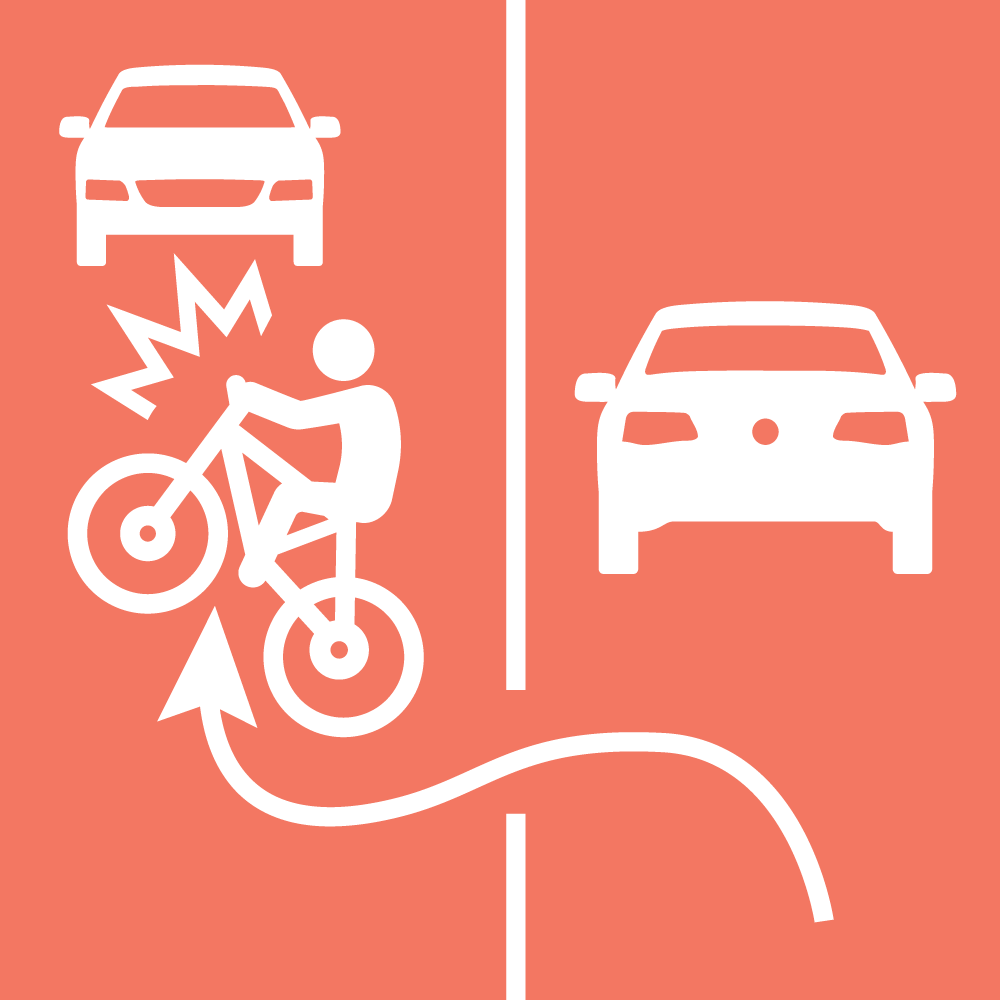
Be Responsible, Predictable,
and Visible
E-bike crashes are more likely to lead to severe injury and hospitalization compared to crashes involving regular bikes.
Be responsible: follow laws and stop at stop signs.
Be predictable: ride in the same direction as traffic.
Be visible: use bright clothing and use lights.
SLOW Your Speed
The higher the speed, the higher the risk of severe injury. At 20 MPH, it could take you almost four school bus lengths to fully stop to avoid an obstacle. Take your time when riding and don’t exceed the manufacturer’s top speeds.
E-Bikes Are Electrifying the Future!
What Parents Should Know
Update coming soon.

SR2S Boletín Verano de 2024

Almuerzo para Voluntarios
Padres voluntarios y enlaces comunitarios están invitados a un almuerzo organizado por Rutas Seguras a las Escuelas el 29 de agosto de 10:30 am a 12:30 pm en la oficina de TAM (900 5th Ave., San Rafael).
Los suministros para el otoño serán entregados durante la reunión.
Nuevo Camino Beneficiará a los Estudiantes de Venetia Valley
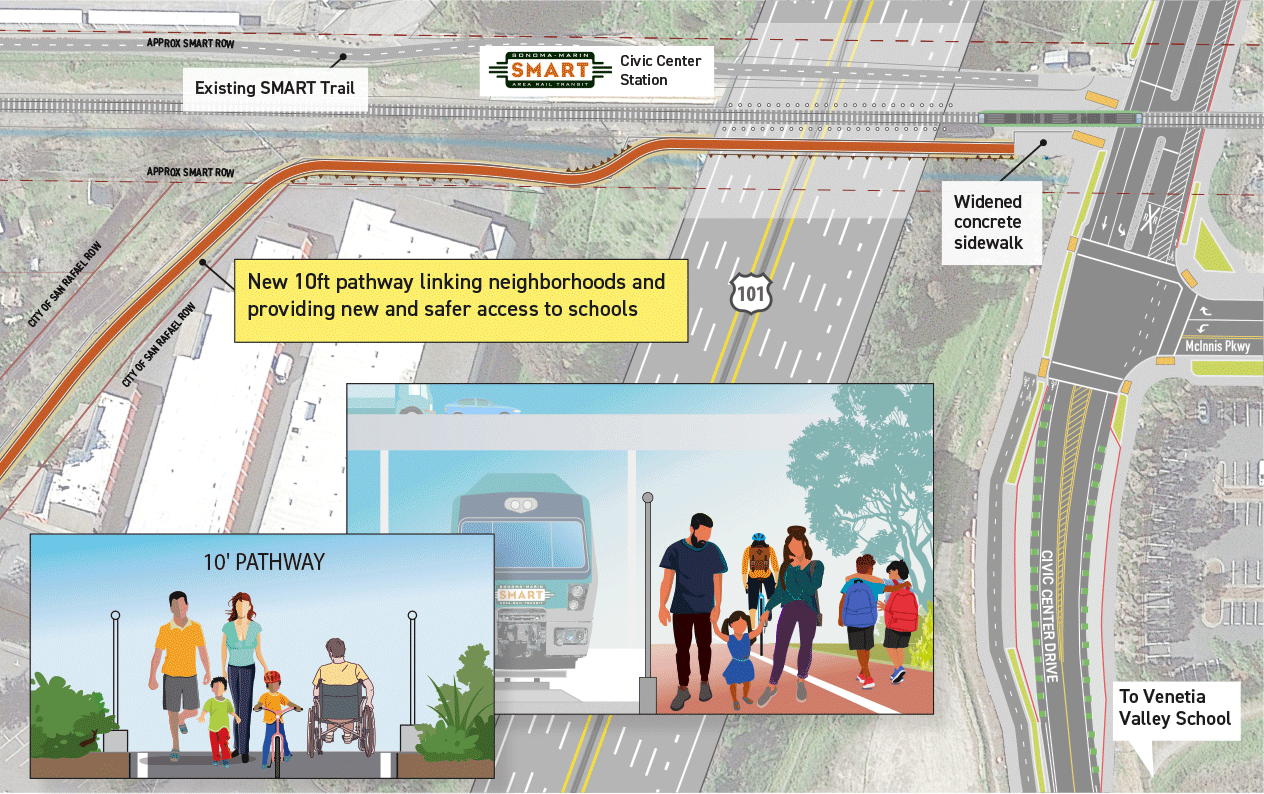
Un muy deseado camino para bicicletas y peatones en el norte de San Rafael que conectará a los residentes con el transporte público, las tiendas, las escuelas y los parques recibirá $1.94 millones en fondos federales. El nuevo camino se extenderá entre Merrydale Road y Civic Center Drive y atenderá a los estudiantes que van y vienen de Venetia Valley.
El proyecto “Rafael Meadows Safe Crossing” creará un camino de usos múltiples de diez pies de ancho junto a las vías del tren de la estación SMART Civic Center, debajo de la autopista 101. Se están buscando fondos adicionales para poder completar el proyecto, el cual se espera que esté listo antes del año escolar 2026/2027.
Los peatones y ciclistas de Venetia Valley podrán evitar por completo la concurrida vía North San Pedro Road durante su utilizando este corredor de 500 pies de largo. El camino unirá Rafael Meadows y otros vecindarios al oeste de la autopista US 101 con los caminos de usos múltiples existentes en el lado este. Hoy en día, para llegar a la escuela, los peatones deben caminar a lo largo de Merrydale Road y North San Pedro Road, las cuales tienen vehículos que van muy rápido, cruces largos y rampas de autopista.
El proyecto se identificó inicialmente a través de un proceso de planificación que involucró Rutas Seguras a las Escuelas, estudiantes, padres y personal de la escuela K-8. El sitio donde se construirá el camino es propiedad de diferentes grupos, lo que dificultó la coordinación. Se alcanzó un consenso por el bien de la comunidad, gracias en parte a una auditoría de caminatas realizada por Rutas Seguras a las Escuelas, que reunió a miembros de la comunidad, personal de la ciudad, SMART y Caltrans.
.
Rutas Seguras Recibe Premio por Servicio Comunitario

El programa Rutas Seguras a las Escuelas de la Autoridad de Transporte de Marín fue seleccionado para recibir el Premio Golden Bell (Campana Dorada) de este año por parte del Distrito Escolar de Ross Valley (RVSD). La campana Dorada reconoce la asociación distrital de 24 años de Safe Routes to Schools que fomenta viajes seguros y saludables hacia y desde las escuelas.
El premio fue anunciado en la reunión de la junta del distrito en mayo. La directora del programa Rutas Seguras, Gwen Froh, estuvo presente para recibir el premio. “Es especialmente increíble ser reconocido por el RVSD donde comenzó Rutas Seguras”, dijo. El programa fue creado en 2000 como un piloto en la escuela primaria Manor en Fairfax, que pertenece al distrito. Rutas Seguras a las Escuelas es ahora un programa nacional.
Citando la misión de Rutas Seguras de “garantizar que los niños lleguen a la escuela de forma segura y divertida”, la superintendente de RSVD, Marci Trahan, agradeció al programa “por todo lo que hace todos los días”.
La superintendente Trahan también reconoció los estudios de infraestructura y la recopilación de datos del programa para crear rutas seguras.
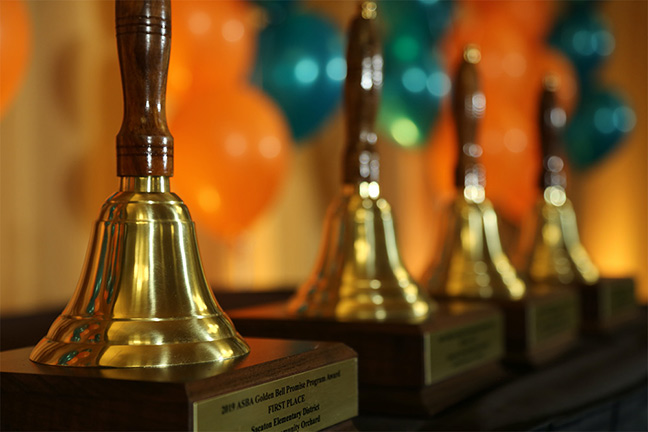
El evento la Campana Dorada, que honra a los maestros, el personal escolar y los socios comunitarios de Marín, se llevó a cabo el 23 de mayo en Dominican College. “Este honor debe ser compartido con todos nuestros padres voluntarios, maestros, estudiantes, administradores y funcionarios de la ciudad. Su compromiso es la razón por la que Rutas Seguras tiene éxito”, dijo Froh.
Estudiantes de Marín Responden Entusiasmados al Reto Arco Iris

Los estudiantes de Marín aceptaron el Reto Arco Iris con entusiasmo. El concurso, organizado por Rutas Seguras a las Escuelas, requería que los estudiantes caminaran o anduvieran en bicicleta a la escuela semanalmente durante cuatro miércoles consecutivos. Más de 5,000 estudiantes de 42 escuelas se unieron. El desafío, que ocurrió entre el 17 de abril y el 8 de mayo, fue la iteración de un concurso anual que se centra en la creación de un hábito saludable y la reducción del tráfico.
“El concurso generó mucho entusiasmo”, dijo Charlie Vaughan-Griffith, padre voluntario de Edna Maguire en Mill Valley. “Creo que la coherencia del desafío de cuatro semanas permitió a los niños y a los padres concentrarse en cada miércoles como un día de rodar y caminar”.

En particular, el concurso incluyó a la mayoría de las escuelas que sirven a comunidades de menores recursos en West Marin, San Rafael y Novato. Mónica Leifer, coordinadora bilingüe de SR2S, destacó cómo esas escuelas fueron las primeras en asumir el desafío –y la diversión–, subrayando el firme compromiso de Rutas Seguras con la equidad y la inclusión.
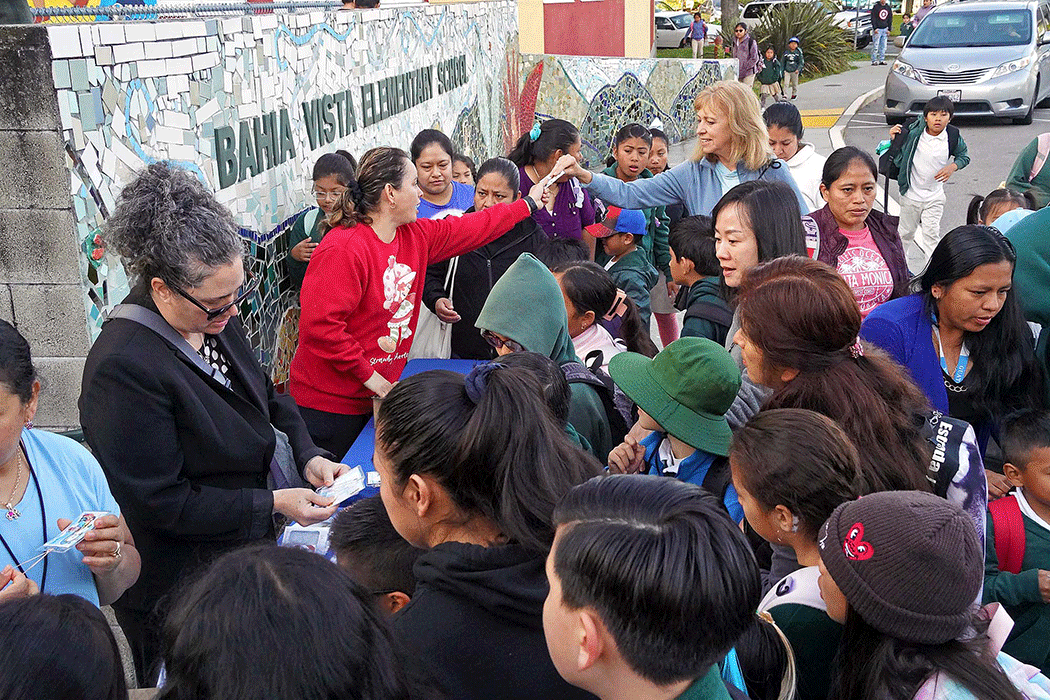
La culminación del Reto Arco Iris el 8 de mayo coincidió con el Día Nacional de Ir en Bicicleta a la Escuela. Las escuelas celebraron la ocasión con animadas celebraciones. Agentes de policía saludaron a los caminantes y ciclistas en Laurel Dell, Neil Cummins, Bacich y Bahía Vista y distribuyeron calcomanías relucientes del Departamento de Policía a los estudiantes.
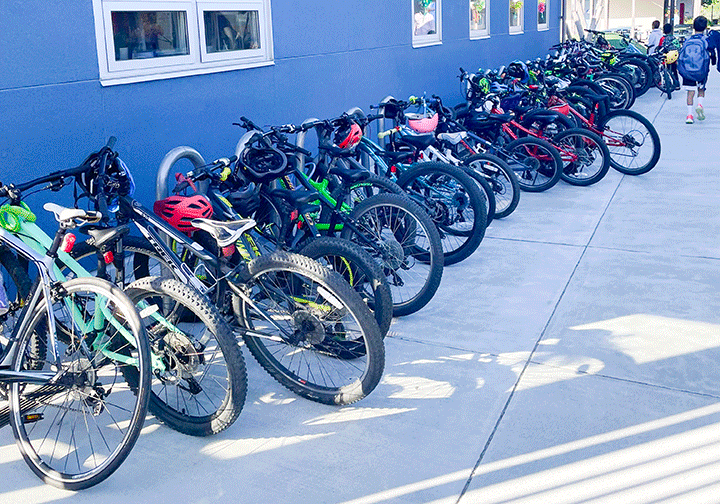
Además de la policía, algunas escuelas también tenían sus respectivos departamentos de bomberos escoltando los trenes en bicicleta. Uno de ellos, Pleasant Valley, donde estuvo presente el Marin Independent Journal, informó de una participación “masiva”. La escuela primaria Tam Valley organizó un desfile de bicicletas con el departamento de bomberos del sur de Marín. En Wade Thomas, más de 100 niños y sus padres se unieron a un desfile de peatones y ciclistas escoltados por un camión de bomberos, según el organizador, Jason Cardillo.
En Sun Valley más de 150 estudiantes se presentaron en la mesa de bienvenida.
Safe Routes Honra a Voluntaria y Enlace Familiar “Jubiladas”

No habría un programa de Rutas Seguras a las Escuelas sin padres voluntarios y enlaces familiares. Ahora que el año escolar 2023-24 llega a su fin, la organización quiere reconocer su trabajo. Gracias a su compromiso y esfuerzo, más estudiantes llegan a la escuela de forma segura y activa. Aunque estos padres y personal escolar se están “retirando” de su función, su influencia seguirá sintiéndose. Rutas Seguras quiere honrar y agradecer a:
VIRGINIA MENZEL – Primaria Loma Verde
Después de dedicar 23 años a las escuelas de Novato, la enlace comunitaria Virginia Menzel se retira del distrito. Durante su estancia en la Primaria Loma Verde, jugó un papel fundamental en el mantenimiento del programa, especialmente durante los últimos tres años. Durante este período, participó activamente en reuniones de padres voluntarios y de enlaces familiares, fue coanfitriona de mesas de bienvenida y publicitó extensivamente muchos eventos y concursos.
BRIA LARSON – Primaria Park
Durante los últimos dos años, Bria Larson dirigió un sólido programa de Rutas Seguras en Park School en Mill Valley. “Los miércoles de Caminar y Rodar fueron una verdadera fiesta en Park School. Lo teníamos todo… ¡música, sonrisas y muchísimos lápices y borradores! Me encantó conocer a niños de todos los grados e incluso algunos estudiantes ayudantes saludaban a sus compañeros de clase cada mes”, dijo Larson. “El sentido de comunidad y diversión era contagioso”.
Seis Perfectos “Influencers” sobre Ruedas
Muchos maestros y administradores escolares en el condado de Marín usan sus bicicletas (¡o patinetas!) como transporte. La mayoría lo hace, llueva o haga sol, y recorren distancias tan largas como Petaluma-San Rafael. Independientemente de cuán corto o largo sea su viaje, estos educadores ejemplifican un estilo de vida saludable y se preocupan por el planeta, no solo para sus estudiantes sino también para la comunidad en general. Son los modelos rodantes perfectos. Estos son sólo seis de ellos.
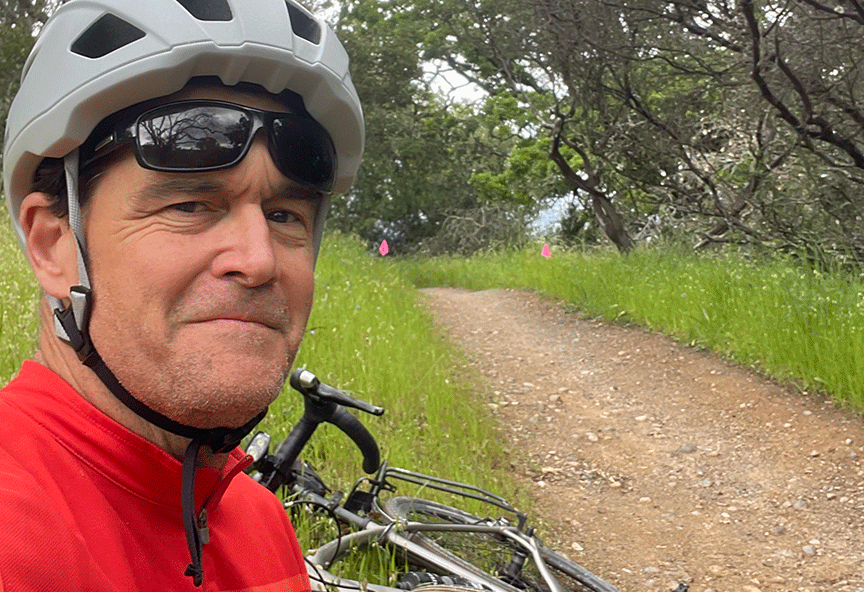
MATT POPE: Escuela Venetia Valley (San Rafael)
Matt Pope es el viajero “verde” por excelencia. Todos los días viaja en SMART desde su casa en Petaluma hasta el centro de San Rafael. Luego va en bicicleta a la escuela Venetia Valley, donde enseña. A veces, el Sr. Pope se baja en Novato y monta en bicicleta hasta Petaluma. “Nunca me di cuenta del estrés mental que conlleva conducir y esperar en el tráfico. Ahora llego a la escuela al menos una hora antes de que suene la campana, lo que me da tiempo para conectarme, respirar y prepararme para el día”, dijo.

MIKE RUNYEON: Primaria Rancho (Novato)
“Incluso con lluvia sigo montando. Por supuesto, me aseguro de vestirme apropiadamente. No hay mal tiempo, sólo mal equipo”, dice Mike Runyeon, profesor de educación física en la escuela primaria Rancho, refiriéndose a su aguante durante el invierno. Normalmente viaja en SMART desde Petaluma hasta Novato y desde allí, va en bicicleta a la escuela.

DAVID SNAITH: Escuela Secundaria San Rafael (San Rafael)
David Snaith, profesor de matemáticas en la escuela secundaria San Rafael, viaja 12 millas dos o tres días a la semana. “Ver a la gente afuera, ya sea caminando, montando en bicicleta o haciendo jardinería, es maravilloso. Eso crea un sentido de comunidad que nunca tengo mientras estoy en mi carro”, dijo.
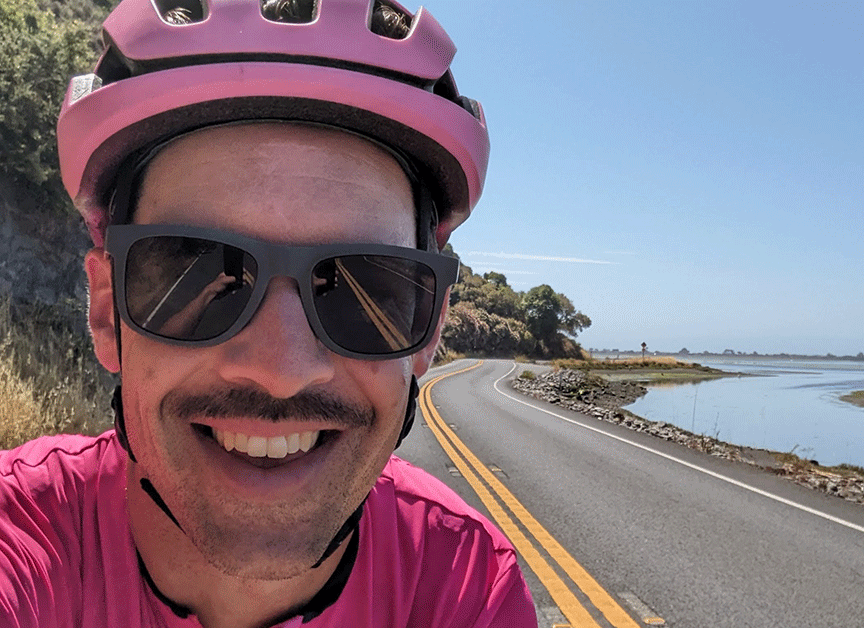
JAMES SIEVERT, Escuela Primaria Bel Aire (Tiburón)
Su amor por el ciclismo y los niños llevó a James Sievert, un maestro licenciado, a trabajar como instructor principal en Rutas Seguras a las Escuelas durante diez años. Ahora, como profesor de educación física, el Sr. Sievert va a clase desde su casa en Mill Valley todos los días y también sirve como guardia de cruce en su escuela. Dice que “es fantástico ayudar a nuestros estudiantes que caminan, andan en bicicleta o estacionan y caminan para volver a casa después de la escuela”.
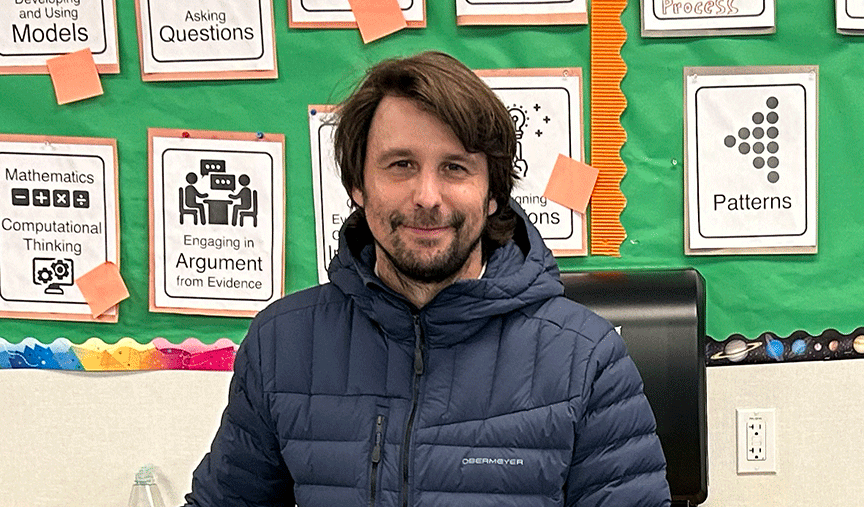
BRANDON DEMONT: Escuela secundaria Miller Creek (San Rafael)
Brandon DeMont enseña ciencias en los grados 7° y 8°. Todos los días, recorre unas seis millas desde Fairfax, cruza una colina empinada en Sleepy Hollow y baja hasta Terra Linda, donde está ubicada la escuela. Para él, andar en bicicleta es mucho más rápido y gratificante que conducir un automóvil. “Ir en bicicleta me da la oportunidad de hacer ejercicio y sentirme preparado para un día completo de enseñanza”, dice. “Cuando vuelvo a casa después de un día ajetreado, proceso los acontecimientos del día y reflexiono antes de reunirme con mi esposa y mi hija de dos años en casa”.

Los estudiantes de Laurel Dell se están acostumbrando a ver a su nuevo director Jimmy López paseando por la escuela en su patineta tan “cool”. Si bien al Sr. López no le es posible viajar en su patineta porque vive en East Bay, él no pierde la oportunidad de mostrarles a los niños no solo sus habilidades sino también los beneficios de ir a la escuela de manera activa. “Me encanta andar en patineta desde que era niño”, dice.
Video Instructivo Sobre Grupos de Caminar y Rodar Disponible Ya

Un nuevo vídeo sobre cómo crear un tren de bicicletas y un autobús escolar andante ya está disponible para todos los interesados en el sitio web de Rutas Seguras a las Escuelas.
Los “trenes en bicicleta” y los “autobuses escolares a pie” son grupos de estudiantes que van juntos en bicicleta o caminando a la escuela bajo la supervisión de unos pocos adultos. Viajar en grupo aumenta la visibilidad para los automóviles y, por lo tanto, hace que andar en bicicleta o caminar sea más seguro. Fomenta la diversión y la amistad y, a menudo, incorpora la cooperación entre los padres para que algunos puedan lleven a los chicos mientras otros se quedan en casa o van a trabajar.
El material instructivo se preparó con la cooperación de padres voluntarios experimentados que ya lo han estado haciendo durante mucho tiempo. Durante un seminario web grabado en abril, los voluntarios compartieron su experiencia y consejos sobre cómo lograr alentar a los jóvenes y sus familias a unirse a sus grupos. El seminario web está lleno de consejos útiles sobre cómo organizar una ruta, cómo animar a su hijo a andar en bicicleta o caminar todos los días, cómo comunicarse y cooperar con otros padres en la supervisión.
Actualmente, Rutas Seguras a las Escuelas tiene la intención de aumentar la cantidad de grupos que viajan juntos a la escuela en todo el Condado de Marín en un futuro cercano. “El autobús escolar andante fue transformador para nuestra familia porque creó la oportunidad de pasar tiempo ininterrumpido sin teléfonos celulares”, dijo Juliet Starrett, madre de la primaria Vallecito, quien empezó uno. “Y nuestros hijos llegaron listos para aprender”.
Los padres que viajan activamente con sus hijos dicen que es un momento precioso para conectarse entre sí y disfrutar de algunas vistas y sonidos naturales a lo largo de la ruta.


SR2S Newsletter Summer 2024

Volunteer Luncheon
Supplies for the Fall semester will be distributed at the end of the meeting.

A highly desired bicycle and pedestrian link in northern San Rafael connecting residents to transit, shopping, schools and parks is getting $1.94 million in federal funds. The new path will run between Merrydale Road and Civic Center Drive and will serve students traveling to and from Venetia Valley School. The “Rafael Meadows Safe Crossing” project will create a 10-foot-wide multi-use path alongside the SMART Civic Center Station train tracks, under Highway 101. Additional funding is being sought to be able to complete the project. It is hoped that the project will be ready before the 2026/2027 school year.
Walkers and rollers from Venetia Valley school will be able to bypass busy North San Pedro Road entirely during their commute to school by using this 500-feet long corridor.
The pathway will link Rafael Meadows and other neighborhoods west of US Highway 101 with existing multi-use paths on the east side. Currently, to reach the school, active travelers must go along busy Merrydale Road and North San Pedro Road, both of which have fast moving vehicles, long crossings, and highway ramps.
The project was initially identified through an inclusive planning process involving Safe Routes to Schools, students, parents, and staff from the K-8 School. The site where the pathway will be built is owned by several different groups, making coordination challenging. Consensus was reached for the good of the community, thanks in part to a walk audit held by Safe Routes to Schools that brought together community members, City staff, SMART, and Caltrans.
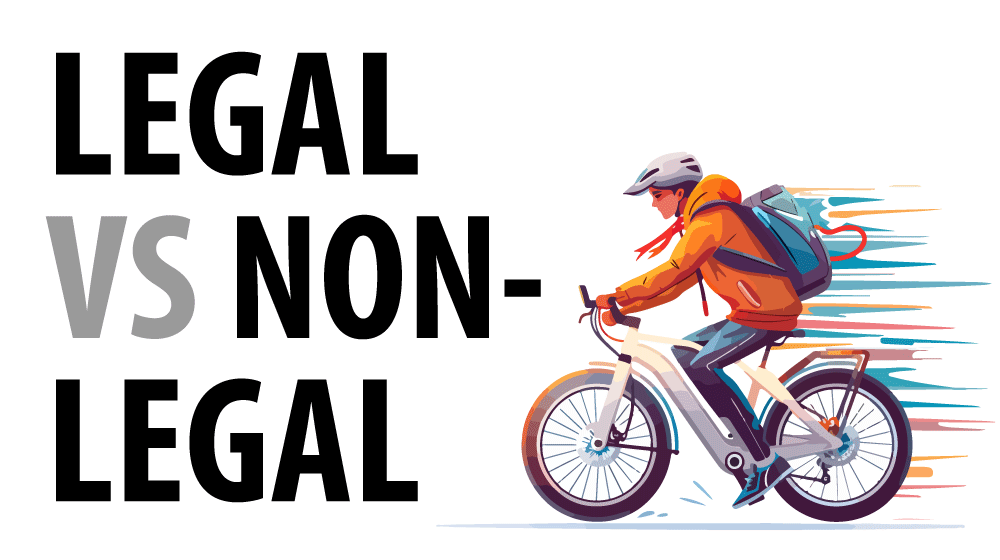
Under the guidance of law enforcement, schools throughout the county are now planning to restrict parking on campuses to “legal” e-bikes next fall. The crackdown came as a result of serious crashes reported among minors.
In a recent letter to Tam Unified High School parents, the Central Marin Police Authority, Mill Valley Police Department, Fairfax Police Department, and Ross Police Department defined, according to California law, what makes an e-bike legal on roads and pathways. Both of the following must apply:
- The motor on the e-bike cannot emit power in excess of 750 watts; AND
- The throttle control on an e-bike cannot enable it to travel faster than 20 mph at any time.
The above mentioned specs are stipulated in California Vehicle Code Section 312.5. According to law enforcement, if a throttle device sold as a class 2 is capable of being switched into going faster than 20 mph on motor power alone, these devices are not considered low-speed electric bicycles, but resemble electric motorcycles.
E-bikes provide many benefits including teen independence and traffic and pollution reduction. But they must be legal. A census done by Safe Routes to Schools in November and April showed that e-devices represented on average 30% of all middle school bicycles and 50% at high schools in Marin. The vast majority have high-power throttle motors incorrectly sold as class 2. These brands do not require pedaling to propel them as do the less popular class 1 and 3.
Safe Routes suggests parents confirm that the speed and throttle control on their child’s e-bike meets California requirements. Here is more e-bike information from our Winter newsletter.

The Transportation Authority Marin’s Safe Routes to Schools program was selected to receive this year’s Golden Bell Award by the Ross Valley School District (RVSD). The Golden Bell recognizes Safe Routes to Schools’ 24-year district partnership fostering safe and healthy travel to and from schools.
The award was announced at the May district board meeting. Safe Routes’ program director Gwen Froh was present to receive the award. “It’s especially incredible to be recognized by the RVSD where Safe Routes started,” she said. Marin Safe Routes began in 2000 as a pilot program at Manor elementary in Fairfax, a district school. Safe Routes to Schools is now a national program.
Citing Safe Routes’ mission to ensure children get to school safely, and make it fun,” RSVD Superintendent Marci Trahan thanked the program “for everything you do, every single day.”
Superintendent Trahan also acknowledged the program’s infrastructure studies and data collection to create safe routes: “Safe Routes to Schools always wants to know from the school district, ‘what are you experiencing, what are you seeing?’ And that’s where the ideas are generated to make getting to school safe.”

The countywide Golden Bell event to honor Marin teachers, school staff and community partners will be held May 23 at Dominican College. “This honor is to be shared with all of our parent volunteers, teachers, students, administrators and city officials. Their commitment is why Safe Routes is successful,” Froh said.

Marin students enthusiastically embraced the Rainbow Challenge organized by Safe Routes to Schools, which required students to walk or bike to school weekly for four consecutive Wednesdays. Over 5,000 students from 42 schools joined in. The challenge, which occurred between April 17 and May 8, was this year’s iteration of an annual contest that focuses on the creation of a healthy habit and reducing traffic.
“The contest generated lots of excitement,” said Charlie Vaughan-Griffith, parent volunteer at Edna Maguire in Mill Valley. “I think the consistency of the four-week challenge enabled kids and parents to focus on every Wednesday as a Walk & Roll day.”

Notably, the contest included most schools from underserved communities in West Marin, San Rafael, and Novato. Monica Leifer, the SR2S bilingual coordinator, highlighted how those schools were the first ones to take on the challenge –and the fun–, underscoring Safe Routes’ steadfast commitment to equity and inclusivity.

The culmination of the Rainbow Challenge on May 8 coincided with National Bike to School Day. Schools marked the occasion with lively celebrations.
Police officers greeted walkers and riders at Laurel Dell, Neil Cummins, Bacich, and Bahia Vista and distributed gleaming Police Department stickers to students.
In addition to police, some schools also had their respective fire departments escorting bike trains. One of them, Pleasant Valley, where the Marin Independent Journal was present, reported “massive” participation. Tam Valley Elementary organized a bike parade with the Southern Marin fire department down Marin Avenue. At Wade Thomas, over 100 children and parents joined a parade of walkers and rollers escorted by a fire truck, according to the organizer, Jason Cardillo.
Sun Valley celebrated with walking and biking groups and over 150 students showing up at the welcome table..


Some distances are just six miles round trip from Goodwin
’s home in Fairfax. Other times, she can be seen biking at dawn to schools in Mill Valley and Novato.“It’s fantastic! I can travel farther now that I have an electric Xtracycle. The students are always impressed with how far I travel to get to their school, especially with heavy loads. It
’s been a game-changer,” she said- Ross – Monday, August 5, 2024 at 10 AM
- Novato – Wednesday, September 11, 2024 at 5 PM
- Kentfield – Thursday, September 5, 2024 at 9:30 AM
- Reed – Thursday, September 12, 2024 at 10 AM
- West Marin – Tuesday, September 17, 2024 at 5 PM
- San Rafael – Wednesday, September 4 at 5 PM
- Sausalito-Marin City – Thursday, September 19, 2024 at 5 PM
- Larkspur-Corte Madera – Thursday, September 26, 2024
at 4 PM - Ross Valley – Friday, September 13, 2024 at 10 AM
- Mill Valley – Wednesday, September 4, 2024 at 9:30 AM
- Miller Creek – Monday, September 9 at 4 PM
Contact Wendi Kallins if you are interested in joining a task force or if you would like a copy of archived task force meeting notes.

There would not be a Safe Routes to Schools program without dedicated parent volunteers and family liaisons. As the 2023-24 school year comes to an end, the organization would like to recognize their work. Through their commitment and effort, more students are getting to school safely and actively. Although these parents and school staff are “retiring” from their role, their influence will continue to be felt. Safe Routes salutes and thanks the following:
VIRGINIA MENZEL – Loma Verde Elementary
After dedicating 23 years to Novato schools, community liaison Virginia Menzel is retiring from the district. Throughout her time at Loma Verde Elementary, she played a pivotal role in sustaining the program, especially during the past three years. During this period, she actively participated in parent volunteer and family liaison meetings, co-hosted welcome tables, and publicized various events and contests.
BRIA LARSON – Park Elementary
For the past two years, Bria Larson managed a robust Safe Routes program at Park School in Mill Valley. “Walk and Roll Wednesdays were a veritable party at Park School. We had it all…music, smiles, and so many pencils and erasers! I loved getting to know kids from all grades, and even had some student helpers greeting their classmates each month,” Larson said. “The sense of community and fun was infectious.”
Many teachers and school administrators in Marin County use their bikes (or skateboard!) for transportation. Most do it rain or shine, traveling distances as long as Petaluma-San Rafael. Regardless how short or long their commute, these educators exemplify a healthy life style and care for the planet, not only for their students but also for the community at large. They are the perfect roll models. Here are just six of them.

MATT POPE: Venetia Valley School (San Rafael)
Matt Pope is the ultimate “green” commuter. Everyday, he rides SMART from his home in Petaluma to downtown San Rafael. Then, he bikes to Venetia Valley School, where he teaches. Sometimes, Mr. Pope gets off in Novato and rides all the way back to Petaluma. “I never realized how much mental stress comes with driving and waiting in traffic. Now, I arrive at school at least an hour before the bell which gives me time to ground myself, breathe and prepare for each day,” he said.

MIKE RUNYEON: Rancho Elementary (Novato)
“Even in the rain, I still ride. Of course, I make sure to dress accordingly. There is no bad weather, just bad equipment,” says Mike Runyeon, a PE teacher at Rancho Elementary, referring to his endurance during the rainy season. He normally rides SMART from Petaluma to a Novato station and from there, rides his bike to school.

DAVID SNAITH: San Rafael High School (San Rafael)
David Snaith, a math teacher at San Rafael High School, commutes 12 miles two or three days a week. “Seeing people out and about, whether they are walking, riding, or gardening in their front yard is wonderful. That creates a sense of community I never get while in my car,” he said.

JAMES SIEVERT, Bel Aire Elementary (Tiburon)
His love of cycling and children led James Sievert, a teacher by training, to serve as lead instructor with Safe Routes to Schools for ten years. Now, as a PE teacher, Mr. Sievert rides to class from his home in Mill Valley every day, rain or shine, and also does crossing guard duty at his school. He says that, “It is great to help our students who are walking, biking or using remote drop off to get home from school.”

BRANDON DEMONT: Miller Creek Middle School (San Rafael)
Brandon DeMont teaches 7th and 8th grade science. Every day, he commutes about six miles from Fairfax, over a steep hill in Sleepy Hollow and down to Terra Linda, where the school is located. For him, riding his bike is far faster and more rewarding than driving a car. “Riding my bike gives me a chance to get exercise and feel ready for a full day of teaching,” he says. “When I ride home after a busy day I process the events of the day and reflect before joining my wife and two-year-old daughter at home.”

JIMMY LOPEZ: Laurel Dell Elementary (San Rafael)
Laurel Dell students are getting used to seeing their new Principal Jimmy Lopez going around school in his very ‘cool’ skateboard. While it’s not possible for Mr. Lopez to commute on his skateboard because he lives in the East Bay, he doesn’t miss the opportunity to show the children not only his skills but also the benefits of rolling to school. “I have loved skateboarding since I was a kid,” he says.

A brand-new video about how to create a bike train and a walking school bus is now available for all interested on the Safe Routes to Schools website.
“Bike trains” and “walking school buses” are groups of students who bike or walk together to school under parental supervision. Traveling as a group increases visibility to cars and therefore makes biking or walking safer. It encourages fun and friendship and it often incorporates cooperation among parents so that some can take the lead while others stay home or go to work.
The instructional material was put together with the cooperation of seasoned parent volunteers who have been doing it for a long time. During a recorded webinar in April, the volunteers shared their experience and tips on how to succeed at encouraging young riders and their families to join their groups. The webinar is full of useful tips on how to organize a route, how to encourage your child to bike or walk every day, how to communicate and cooperate with other parents in supervising.
Safe Routes to Schools is currently intent on increasing the number of groups traveling together to school all over Marin County in the near future. “The walking school bus was transformative for our family because it created an opportunity to spend uninterrupted time without cell phones,” said Juliet Starrett, a parent at Vallecito elementary who started a walking school bus. “And, our kids showed up ready for school.”
Parents who actively commute with their children say it is a precious time to connect with each other and to enjoy some natural sights and sounds along the route.



